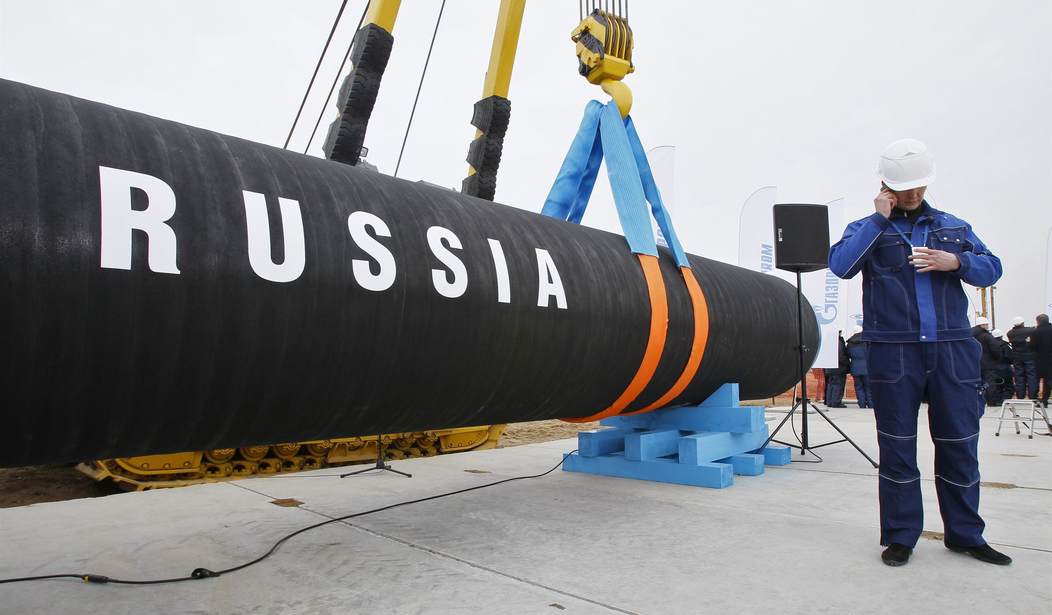I read Jazz’s story this morning about Jeffrey Sachs saying it’s likely the US blew up the Nord Stream pipeline. That’s the line being taken by Tucker Carlson as well. And while I agree there’s no definitive proof either way, at least not anything that has been declassified yet, I think it’s still probable that Russia is responsible.
Russia had already cut off the supply of gas through Nord Stream 1 and Nord Stream 2 was never operational. So there was no real change in the amount of gas going through the pipeline (or the revenue it produced) before or after the sabotage. Gas flow had reached zero and it was going to stay there for at least the duration of the war and likely well beyond that. Germany has finally learned its lesson and was signing agreements with Canada and other nations to replace the gas supply from Russia for the duration.
Putin knew all of this. He had pulled the Nord Stream lever as far as he could to wreak havoc on the German energy market with some success. But once the gas flow hit zero there was nothing more he could do.
Still, why blow up an expensive piece of infrastructure even if it is useless for the foreseeable future? Here many observers point to saber rattling or “signaling,” which you may have noticed is something Russia is doing a lot of lately. By blowing up the pipeline, Russia put Europe on notice that it had other options besides nuclear warfare to raise the stakes. It could in fact, attack vulnerable infrastructure in the region including other pipelines and communications cables. And Norway, which provides oil and gas to Europe, clearly got the message:
The main mission of Norway’s Home Guard is to protect the country’s civilian and military infrastructure. An integral part of the Norwegian army, the rapid mobilization force is made up of mostly civilians who have received military training and continue to train regularly. In total, more than 40,000 men and women can be mobilized in a few hours. On Monday, October 3, some of them were deployed to provide security for key port facilities in several regions.
These include refineries, gas processing plants and a natural gas liquefaction site in Hammerfest, in the north of the country, which produces nearly 230 billion cubic feet of LNG per year, equating to more than 5% of Norwegian exports. In all, the Norwegian Coastal Administration has raised security levels at 20 sites that are considered to be of particular strategic importance for the country, which became Europe’s main supplier of natural gas in early September.
This decision came four days after explosions on the Nord Stream gas pipelines linking Russia and Germany under the Baltic Sea on September 26. The incident sent shockwaves throughout the region. “Governments realized that key parts of the infrastructure in their countries were under threat,” says Jan Hallenberg, a security policy expert at the Institute of International Affairs in Stockholm.
The explosion took place in Denmark and Sweden’s exclusive economic zones, but bordered the territorial waters of both countries, near the island of Bornholm, and opposite the Karlskrona naval base. The site of the explosion was “anything but a coincidence and should be seen as a warning,” according to Mr. Hallenberg. He believes, as do most security experts in the region, that there is no doubt that Russia is responsible. “It is in Moscow’s interest that these countries are more worried about their security than about Ukraine’s survival,” he says.
Against this backdrop, recent sightings of unidentified drones near oil and gas platforms in the North Sea have worried Norwegian authorities. In a letter sent to gas field operators on September 23, four days before the explosions, Norway’s Petroleum Safety Authority had already called for “increased vigilance.” On September 27, Norway decided to raise its security level around its offshore infrastructure.
Norway isn’t alone in worrying what infrastructure project could be next:
The Nord Stream leaks serve as a warning that any one of the numerous gas, power and telecommunication cables crisscrossing Europe could be a target, as NPR’s Jackie Northam put it. Taking note, countries like Norway, Denmark, Italy and Poland have ramped up security and surveillance around their own undersea pipelines in recent days.
There are about 730,000 miles of pipelines around the world, enough to circle the Earth 30 times, says national security analyst Juliette Kayyem. And that’s not including wires connecting the internet, which she says amount to “another million miles of cable, essentially.”
These pipelines are “lifelines for these countries to continue moving and living and having access to electricity,” Kayyem told Morning Edition’s A Martínez on Monday. “They’re vulnerable because they’re large, they are exposed — at least under the ocean floor — and they are very hard to protect.”
Again, the Nord Stream pipelines were already out of the picture when this happened. But even as Russia has been warning about the possible use of nuclear weapons, it is also warning about the possible use of sabotage to get its way. A former US intelligence official told Business Insider this was likely the point Russia was making.
Andrea Kendall-Taylor, a former US senior intelligence officer who led strategic analysis on Russia for the National Intelligence Council from 2015 to 2018, told Insider she believes the leaks were a result of “intentional” sabotage “executed by Russia.”…
“It was a relatively inexpensive way to send a very informative signal to the West. Should we expect these things to continue? Absolutely,” Kendall-Taylor added, underscoring that Russia’s struggles on the battlefield in Ukraine are directly tied to this.
The more “degraded Russia is in terms of its conventional military, the more it will double down and rely on non-conventional tools,” Kendall-Taylor said, which include cyberwarfare, chemical weapons, biological weapons, even tactical nuclear weapons — but also “acts of sabotage like this.”
“They don’t have many options other than these kind of non-conventional tools. That’s where the threat is likely to grow in the coming months and years,” Kendall-Taylor said.
Bottom line: We can all see that Russia’s military is on the ropes and we know Putin is trying his best to threaten and scare the west out of opposing him in the conflict. So what he has left is the possible use of tactical nukes and the use of something like state-sponsored terrorism against critical infrastructure. On that latter point, the destruction of Nord Stream was a demonstration project. The message to Europe was clear: Your pipeline could be next. And while I don’t think it’s likely Putin will escalate to using nukes I do think he could escalate to blowing up more pipelines.








Join the conversation as a VIP Member